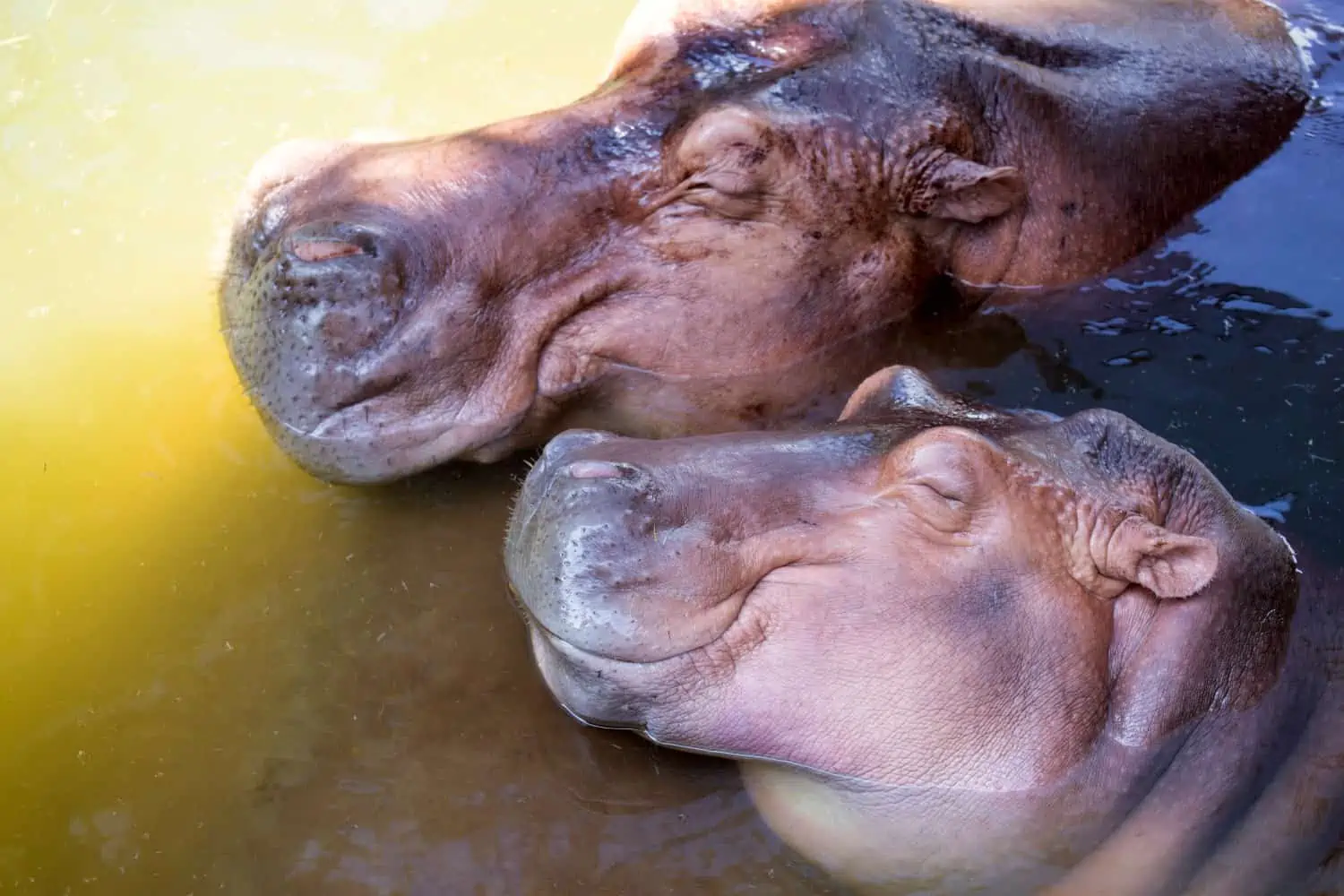You have to admit it, hippos are quite cute. But they are not just that, hippos are also fascinating animals that are unique to any other on the planet. Plus, they play an integral part in the ecosystems around them. Cute to look at, interesting to learn about, and useful! Use World Hippo Day 2022 as an excuse to learn more about these magnificent creatures.
About the Hippopotamus
How Big is a Hippo?
Hippos are the world’s third-largest mammal, with only the African elephant and the blue whale beating them to the prize. An adult hippo weights on average 1500 kilograms, with babies starting at weights of around 45 kilograms. These massive mammals are primarily herbivores, despite their large canine teeth. And consume roughly 40 kilograms of grass per meal. However, when there is a minimal supply of grass hippos have been known to eat old elephant dung. Although all things considered, their food requirement is generally low due to their semi-aquatic lifestyle.
Can They Breathe Under Water?
As semi-aquatic animals, they spend on average 16 hours per day immersed in water. However, they cannot breathe underwater and tend to come up for air every three to five minutes, even when sleeping. Their preference for water even gave them their name, as the word “hippopotamus” refers to an ancient Greek word meaning “river horse”. People have often compared hippos to land animals, however, their closest living relatives are actually cetaceans, such as dolphins and whales.
Another interesting fact about the hippo is that they produce an oily red liquid in the sun, which protects their skin from the sun.
Like most elements in nature, the hippopotamus also plays an important role within their ecosystems. They are crucial in enriching the rivers by stirring the mud on the floor. Plus, their excretion contains ingredients fundamental to the survival of fish and other aquatic creatures.
Where do Hippos Come From?
There are only two species of hippos on the planet, the common hippopotamus and the pygmy hippo. Both can only be found in Africa, and are native to over 30 countries within the continent.
How Long Do They Live For?
These herbivores live up to 50 years in the wild. And female hippos tend to only give birth to one calf every two years.
Are Hippos Endangered?
The hippopotamus has a few predators in nature, such as hyenas, lions, and crocodiles. But unfortunately, humans have also become their primary predators.
While some hunt hippos for their meat. But many hunt them for ivory canine teeth. The demand for which increased in 1989 after the ban on the trade of elephant ivory. However, hippo populations have also been decreasing as a result of habitat destruction and urbanization. Currently, these magnificent creatures are listed as “Vulnerable” on the IUCN Red List.
If you want to take part in World Hippo Day 2022, consider donating to one of the organisations working to protect endangered and vulnerable animals. Such as the African Wildlife Foundation. Or simply spread the word on the important role these creatures play in our world.
Are Hippos Dangerous?
Hippos have their own “safety zone” just like many other mammals. And their safety zone is in the water. Which happens to be where many humans go to drink or wash. And like many animals, they get aggressive when something comes between them and their safety zone. As a result, many fatalities occur when hippos encounter a human between themselves and the water. This has caused the Common Hippopotamus to be ranked as the second most dangerous animal in Africa, surpassed only by the malaria-carrying Anopheles mosquito.
Another factor that plays a role, is that due to their size many people underestimate the speed of a hippo on land. But an adult hippo can reach speeds of up to 36 kilometers per hour.
